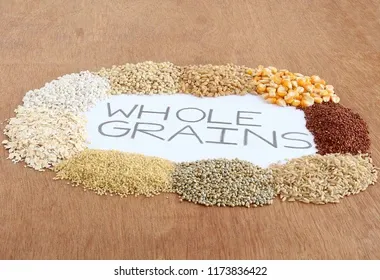(source)[ https://images.app.goo.gl/bbxS25maW8JzaFnS7]
.jpeg)
Good evening dear friends and well wishers. Actually this is my first time of posting and I pray you find my post very interesting. There are various ways of clearing Triglycerides and Cholesterol naturally, but before then I will like to tell you what it means.
Triglycerides are caused due to consumption of excess fatty food when we eat food that contains calories the once that are not needed are being stored in the fat cell and it will affect the blood causing blood triglycerides.
What is cholesterol?
Cholesterol is a waxy, fat-like substance that the liver produces. It is also present in animal-based foods. Cholesterol supports many essential bodily functions, but high levels can lead to health issues.
Having high cholesterol does not cause symptoms, but it can increase the risk of heart disease and stroke. Doctors can prescribe statins to help lower a person’s cholesterol levels, but these medications can cause side effects, such as headaches, muscle cramps, and nausea.
Cholesterol supports many essential bodily functions, such as cell membrane formation and hormone production. However, having high levels of cholesterol can increase a person’s risk of heart disease, heart attack, and stroke.
People can naturally lower their cholesterol levels through dietary and lifestyle changes. Replacing trans fats with monounsaturated and polyunsaturated fats can help lower levels of cholesterol and raise levels of HDL cholesterol.
However, certain foods contain cholesterol, and other foods can trigger the liver to produce more cholesterol.
Ways of clearing cholesterol naturally without medication are as follows;
•Avoid trans fats
•Consume fewer saturated fats
•Monounsaturated fats
•Polyunsaturated fats
•Soluble fiber
•Exercise
- Avoid trans fats:

Trans unsaturated fatty acids, which people commonly refer to as trans fats, are unsaturated vegetable fats that have undergone an industrial process called hydrogenation, which makes them solid at room temperature. Food manufacturers use trans fats because they are relatively inexpensive and long-lasting.
Basic sources of trans fats includes:
• Margarine
• Vegetable shortening
• Partially hydrogenated vegetable oils
• Fried foods
• Certain processed and prepackaged foods
• Bacteria in the stomachs of cows, sheep, and goats produce natural trans fats. Cheese, milk, and other dairy products may contain modest amounts of natural trans fats.
Further more, consuming trans fats can negatively affect a person’s health in two different ways:
They can raise blood levels of low-density lipoprotein (LDL) cholesterol, or “bad cholesterol”
They can reduce blood levels of high-density lipoprotein (HDL) cholesterol, or “good cholesterol”
Consume fewer saturated fats:
.jpeg)
Saturated fats generally stay solid at room temperature whereas unsaturated fats are usually liquid.
Sources of saturated fats includes;
- Red meat
- Pork
- Chicken with the skin on
- Butter
- Cheese
- Cooking oils, such as palm oil and coconut oil
NB: saturated fat should only represent about 5–6% of a person’s daily calorie intake.
Coconut oil and butter predominately contain saturated fat, whereas olive oil contains mostly monounsaturated fat.
- Consume more monounsaturated fats
.jpeg)
Vegetables, nuts, and fish are rich in monounsaturated fats. These fats take the form of liquids at room temperature.
Best sources of monounsaturated fats includes;
- Avocados
- Nuts, such as almonds, and peanuts.
- Vegetable oils, such as olive, peanut, sesame, and sunflower oils
- Make sure you eat more polyunsaturated fats
.jpeg)
Polyunsaturated fats include omega-3 and omega-6 fatty acids. Consuming these fats can reduce cholesterol without affecting cholesterol levels. It is important to balance the intake of omega-6 fatty acids with that of omega-3 fatty acids. Consuming too many omega-6 fatty acids may cause adverse health effects
Sources of polyunsaturated fats includes:
- Walnuts or peanuts
- Fish, such as salmon, tuna, and trout
- Plant oils, such as soybean, corn, and sunflower.
Diets rich in polyunsaturated fats from fish oil may prevent some mechanisms of arrhythmia, which is an irregular heartbeat, and promote overall heart health.
- Eat more soluble fiber:

Soluble fiber absorbs water to create a thick, gel-like paste in a person’s digestive tract. Soluble fiber not only supports digestive health but also lowers levels of LDL cholesterol and promotes overall heart health.
Benefits of a high-fiber diet: The person who consumed 70 g per day of soluble fiber had lower total cholesterol and cholesterol levels than those who ate their usual diet.
Healthy rich food in soluble fiber includes:
- Vegetables
- Fruits
- Whole grains, such as brown rice
- Beans
NB: Soluble fiber lowers cholesterol levels but does not affect cholesterol or triglyceride levels. Consuming too much soluble fiber can lead to constipation, bloating, and stomach pain. People should try to increase their soluble fiber intake gradually over time.
- Regular exercise:
.jpeg)
By exercising your body regularly you can burn (lower) cholesterol.
Avoid drinking alcohol too much
.jpeg)
Thanks for reading
Special thanks to
@steemitblog
@steemcurator01
@dobartim
@tatjanastan
@enveng
